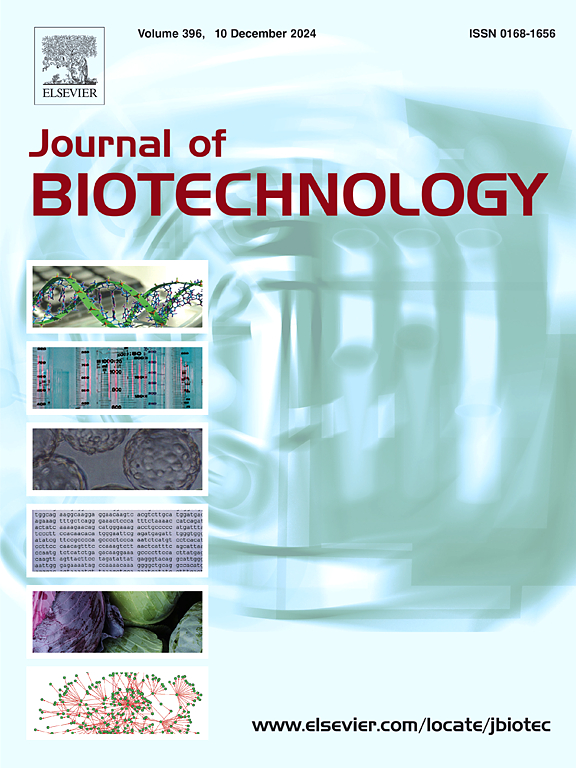Establishment of high-efficiency hairy root and genetic transformation system in Cynanchum stauntonii
IF 3.9
2区 生物学
Q2 BIOTECHNOLOGY & APPLIED MICROBIOLOGY
引用次数: 0
Abstract
Cynanchum stauntonii is an important medicinal plant with antitussive effect, and its roots and rhizomes are the main medicinal part. The saponins of C. stauntonii are generally considered to be the active ingredients. The hairy root (HR) system is an important production system for secondary metabolites. However, the systems for HR induction and transformation of C. stauntonii have not been reported. Using Agrobacterium rhizogenes A4 and 20-day young stems, we induced HRs in C. stauntonii with a 79.5 % success rate. The results showed that the content of steroid alkaloids, such as cortisone, tomatidine, jurubine and 18-hydroxycorticosterone in HRs, were increased compared with normal roots (NRs). We applied three elicitors—chitosan, turpentine, and MeJA to enhance the biosynthesis of active components in HRs. The results showed that 10 mg/L chitosan could increase the content of active ingredients in HRs by over two-fold. Additionally, we successfully established a genetic hairy root transformation system with a 56.36 % success rate, enabling betalain production up to 1.24 mg/g in dry weight of HRs. This research is the first to report HR induction and transformation systems for C. stauntonii, laying a crucial foundation for future functional genomics studies and the production of active components in this valuable medicinal plant.
水仙高效毛状根的建立及遗传转化体系。
水仙是一种重要的止咳药用植物,其根和根茎是主要药用部位。通常认为山参的皂苷是有效成分。毛状根(HR)系统是次生代谢产物的重要生产系统。然而,目前尚没有相关的HR诱导和转化系统的报道。利用发根农杆菌A4和20日龄嫩茎,成功诱导水蛭HRs,成功率为79.5%。结果表明:与正常根相比,红豆根中甾类生物碱(可的松、番茄碱、朱绿碱和18-羟基皮质酮)含量明显增加;应用壳聚糖、松节油和MeJA三种激发剂促进HRs中活性成分的生物合成。结果表明,10mg/L壳聚糖可使其有效成分含量提高2倍以上。此外,我们成功地建立了遗传毛状根转化体系,成功率为56.36%,使甜菜素产量达到干重1.24mg/g。本研究首次报道了金盏花的HR诱导和转化系统,为该珍贵药用植物的功能基因组学研究和活性成分的生产奠定了重要基础。
本文章由计算机程序翻译,如有差异,请以英文原文为准。
求助全文
约1分钟内获得全文
求助全文
来源期刊

Journal of biotechnology
工程技术-生物工程与应用微生物
CiteScore
8.90
自引率
2.40%
发文量
190
审稿时长
45 days
期刊介绍:
The Journal of Biotechnology has an open access mirror journal, the Journal of Biotechnology: X, sharing the same aims and scope, editorial team, submission system and rigorous peer review.
The Journal provides a medium for the rapid publication of both full-length articles and short communications on novel and innovative aspects of biotechnology. The Journal will accept papers ranging from genetic or molecular biological positions to those covering biochemical, chemical or bioprocess engineering aspects as well as computer application of new software concepts, provided that in each case the material is directly relevant to biotechnological systems. Papers presenting information of a multidisciplinary nature that would not be suitable for publication in a journal devoted to a single discipline, are particularly welcome.
 求助内容:
求助内容: 应助结果提醒方式:
应助结果提醒方式:


